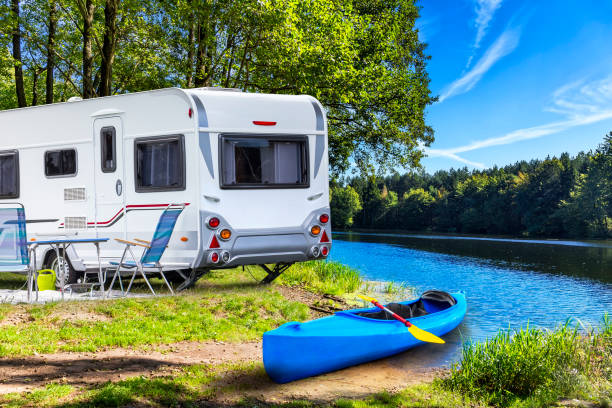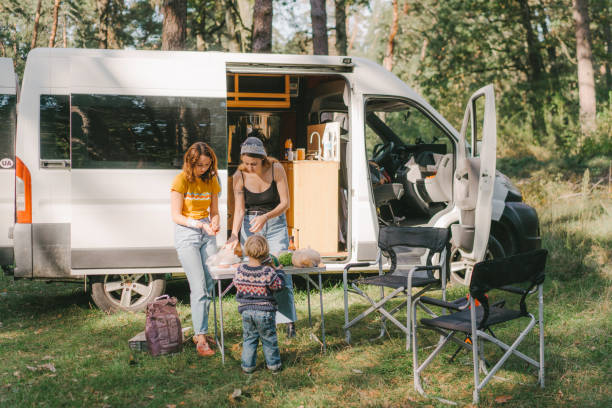Camping within the vast expanses of national parks can be a dream come true for nature lovers and outdoor enthusiasts. However, the freedom to pitch a tent comes with certain limitations and rules. In most national parks, one cannot simply camp anywhere. Designated camping areas are established to protect the environment and ensure the safety and enjoyment of all visitors. Breaking down the specifics, camping policies vary by park, but they commonly require visitors to stay in campgrounds or in backcountry areas with a permit. A deeper dive into this topic reveals why controlled camping is essential and what options you have for your next wilderness getaway.
The Need for Rules and Regulations in Camping

While the idea of unfettered access to national parklands for camping seems ideal, it presents numerous challenges. First and foremost, national parks are lands set aside for conservation and protection of natural resources. Allowing campers to set up anywhere would likely lead to environmental damage, as vegetation could be trampled, wildlife disturbed, and water sources contaminated. Additionally, unregulated camping poses potential dangers to campers, including interactions with wildlife and risks of getting lost without proper guidance or trails.
National park authorities balance conservation efforts with providing recreational opportunities by designating specific areas for camping. These designated areas often include amenities such as fire rings, picnic tables, and restrooms, helping to minimize human impact on the surrounding environment. They are strategically placed to allow for emergency access and to manage the numbers of campers in any given area, preventing overuse and overcrowding. This regulated approach helps preserve the natural beauty and ecosystems that make national parks such treasures to begin with.
Designated Campgrounds vs. Backcountry Camping
When we consider camping options in national parks, they typically fall into two categories: designated campgrounds and backcountry camping. Designated campgrounds are the most easily accessible and come with the most amenities, such as running water, electrical hookups for RVs, and sometimes even Wi-Fi. These campsites are perfect for families or those looking for a comfortable outdoor experience with some of the conveniences of home. Backcountry camping, or “dispersed camping,” on the other hand, is for those seeking a more rugged adventure. This type of camping is allowed in specific areas away from roadways and developed regions of the park, often requiring a hike to reach.
For backcountry camping, one typically needs to:
- Obtain a backcountry permit in advance or upon arrival, depending on the park’s policy.
- Follow Leave No Trace principles to minimize impact on the environment.
- Use bear-proof containers or bear poles for food storage in bear country areas.
- Be aware of and prepared for potential natural hazards unique to the area.
- Practice safe fire management or avoid making fires altogether if restrictions are in place.
- Plan to pack out all trash and human waste, as facilities are not available.
Adhering to these guidelines ensures that the wilderness stays wild and that campers leave a minimal footprint.
Securing Permits and Planning Your Trip
Prior to setting out on a camping trip in a national park, securing the necessary permits is crucial. Permits help park rangers know who is out in the park, which can be essential in case of an emergency. They also limit the number of campers in an area, helping to preserve the solitary nature of the backcountry experience. Securing a permit often involves an application process that can be competitive, especially in popular parks during peak season. Therefore, planning well in advance is advised.
To successfully plan your trip, you’ll need to research the specific park’s regulations and permit system. Many parks allow you to reserve campgrounds and permits online, while others operate on a first-come, first-served basis. Always check for the latest information on the park’s official website or by contacting the ranger station directly. It is also wise to familiarize yourself with the park’s rules regarding campfires, wildlife interactions, and weather-related safety precautions. By being informed and prepared, you will ensure your camping trip is safe, enjoyable, and responsible.
Respecting Wildlife and the Environment
It’s essential to keep in mind that when you are camping in a national park, you are a guest in the home of countless wildlife species. Minimizing your impact on their habitat is not only respectful but also a matter of your safety. Keeping a clean campsite, storing food properly, and maintaining a safe distance from animals are all practices that must be strictly observed.
Additionally, following Leave No Trace principles helps in preserving the park’s pristine condition for future generations. These guidelines include staying on established trails, camping on durable surfaces, and leaving natural objects and cultural artifacts as you find them. It is the collective responsibility of all visitors to ensure the park remains unspoiled, providing sanctuary for wildlife and a retreat for nature lovers for years to come.
Benefits of Controlled Camping Areas
Controlled camping areas offer a balance between our desire to connect with nature and the need to protect it. Not only do these areas provide safety measures for campers and minimize environmental damage, but they also facilitate a social atmosphere where families and friends can enjoy the great outdoors together. Designated campgrounds often foster a sense of community where campers can share stories, tips, and experiences, enriching the overall adventure.
Moreover, controlled camping areas contribute to the park’s infrastructure and maintenance. Fees collected from campers help fund the upkeep of trails, facilities, and conservation projects. This financial support is vital for the longevity of the national parks, ensuring they remain accessible and beautiful for everyone to enjoy.
Conclusion
In conclusion, whilst you cannot camp just anywhere in a national park, the established regulations and designated camping areas serve a greater purpose. They balance the need for preservation with the joy of exploration. By following these guidelines, securing necessary permits, and respecting the natural environment, campers can safely and responsibly enjoy the wonder of America’s national parks. Remember, by camping within the rules, you contribute to the protection of these treasured landscapes for current and future outdoor enthusiasts. So, plan ahead, tread lightly, and immerse yourself in the serenity of the wild, knowing you are doing your part to keep it wild.
